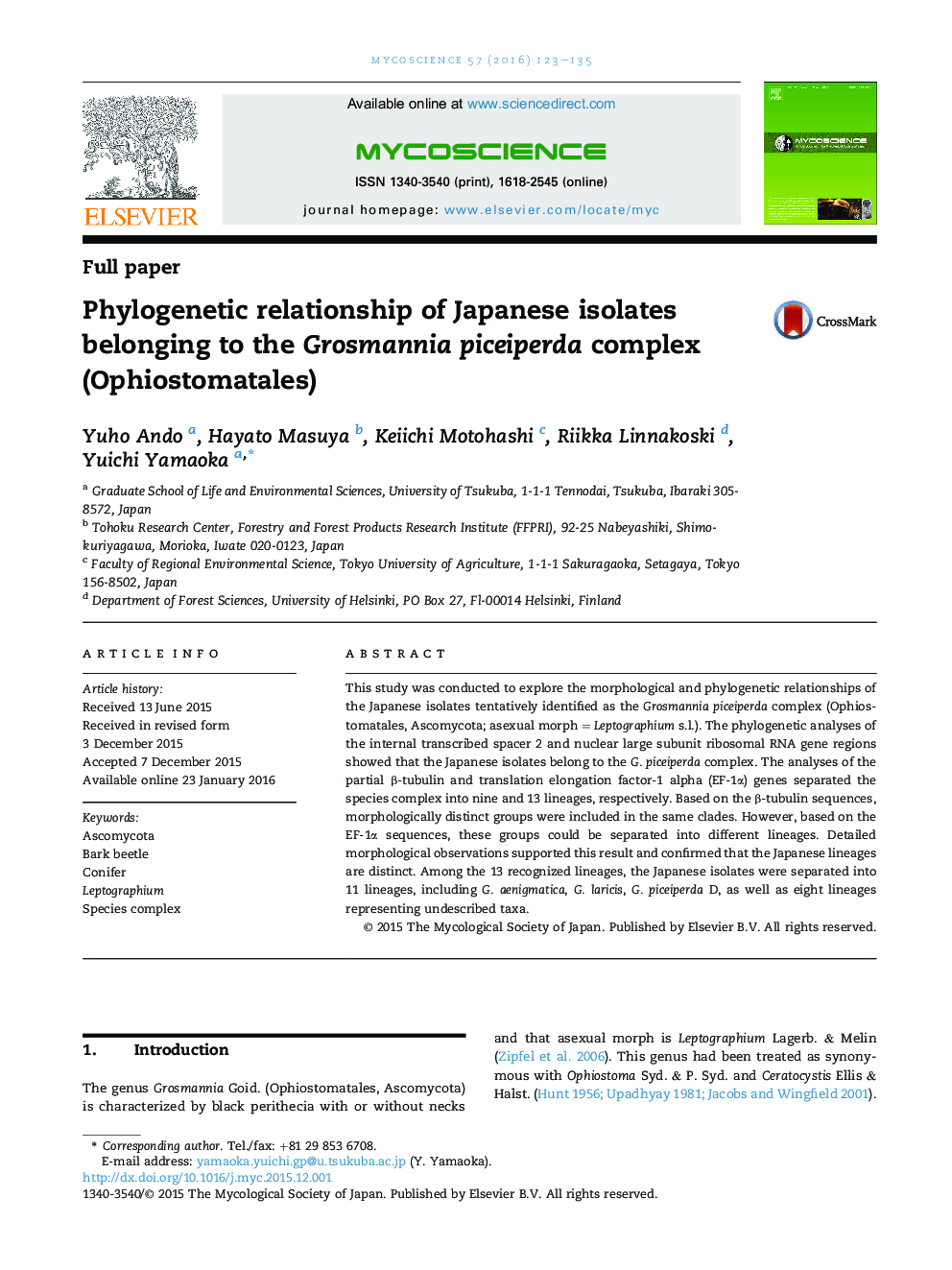| Article ID | Journal | Published Year | Pages | File Type |
|---|---|---|---|---|
| 2060083 | Mycoscience | 2016 | 13 Pages |
•Japanese isolates of the Grosmannia piceiperda complex were phylogenetically separated into 11 lineages.•Eight out of these lineages were novel ones.•Eleven Japanese lineages could be morphologically distinguished.
This study was conducted to explore the morphological and phylogenetic relationships of the Japanese isolates tentatively identified as the Grosmannia piceiperda complex (Ophiostomatales, Ascomycota; asexual morph = Leptographium s.l.). The phylogenetic analyses of the internal transcribed spacer 2 and nuclear large subunit ribosomal RNA gene regions showed that the Japanese isolates belong to the G. piceiperda complex. The analyses of the partial β-tubulin and translation elongation factor-1 alpha (EF-1α) genes separated the species complex into nine and 13 lineages, respectively. Based on the β-tubulin sequences, morphologically distinct groups were included in the same clades. However, based on the EF-1α sequences, these groups could be separated into different lineages. Detailed morphological observations supported this result and confirmed that the Japanese lineages are distinct. Among the 13 recognized lineages, the Japanese isolates were separated into 11 lineages, including G. aenigmatica, G. laricis, G. piceiperda D, as well as eight lineages representing undescribed taxa.
